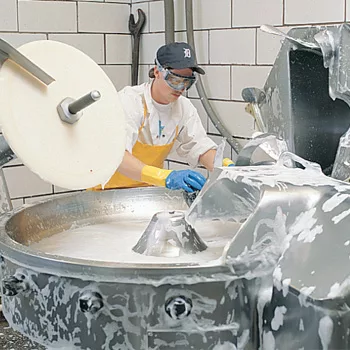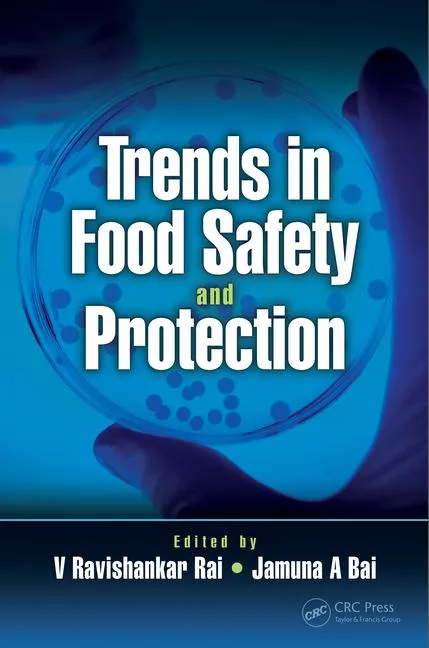Down and Dirty Lessons in Sanitation

Chris Celusta gets down and dirty every week at food processing and handling facilities nationwide. As Spartan Chemical, Inc.’s manager of food processing sanitation, Celusta visits a wide spectrum of food plants each week, looking at each operation’s sanitation practices to provide customized technical assistance and expert advice about the best use of sanitation chemicals and application methods.
“I see a lot of good sanitation programs at the food plants I visit,” says Celusta, a 23-year veteran with the Maumee, OH-based company known for its line of high-performance sanitation products, maintenance systems and training programs to ensure food safety in food processing, handling and service operations. “But even those companies with dedicated crews who implement best practice approaches to cleaning and sanitizing, and use state-of-the-art sanitation equipment and appropriate chemicals can, from time to time, experience bumps in the road. That’s why it is important for companies to routinely verify that their sanitation systems are working as intended and as appropriate for the types of food they produce.”
Sanitation Solution Stories from the Field
Some of Celusta’s recent onsite experiences attest to the value of these lessons in terms of added production efficiencies and food safety assurance from continuous improvement of sanitation best practices:
1. Altered Application. Sometimes sanitation problems show up in unexpected ways, notes Celusta, as was the case at one further-processed meat plant. “The green pads the plant used for mechanical scrubbing during the cleaning process were tearing and falling apart,” he says. “The problem was that when they switched to a new sanitation chemical product they continued to mix it on the heavy side as they had done with the previous cleaner. We advised them that the new product was more aggressive with a high alkalinity and so mixing it a little stronger was shredding the green pads. Mixing the product properly got better results.”
This case reinforces the importance of mixing sanitation chemicals as intended. More is not necessarily better and neither is less, Celusta states. “Even though a typical directional label might say to mix it ‘1:20 or six ounces of chemical solution per gallon of water,’ you might have to go a little stronger or a little leaner depending on soil loads and frequency of cleaning in your particular operation. However, if you start to see things like torn scrub pads—or higher swab counts because you’ve used less product in the mix than you should—you likely need to make adjustments in how you apply and use the product.”
2. Modified Method. Biofilms are the scurge of any food processing facility, and preventing their development on food-contact surfaces and processing equipment can be challenging. A high-volume produce processor found that by rotating its cleaning products, microbiological counts were reduced. “Historically,” Celusta explains, “when you clean up after a production run, you use a high alkaline cleaner and/or a high alkaline-and-chlorinated type degreaser. Since alkaline residues can build up over time and develop into conceivably a white film or residue, this particular facility decided to use the alkaline-based cleaners two or three days a week and then switch to a foaming acid cleaner once a week to disrupt, in their opinion, any filming and possibly the microorganisms in the plant.”
The company reported that they lost no cleaning efficiencies by modifying their method, and more importantly, by limiting cleaning chemical residues through more infrequent usage, they eliminated the buildup scale type of problems associated with hard water or heavy alkaline users. Although this method is not deemed applicable to a meat plant, which has the heavy-duty types of soils associated with fats, oils and greases, adds Celusta, it is a good example of how a change in procedure can reap benefits for the sanitation program.
3. Training Tweak. Celusta recently was called to a large dairy-based dessert item manufacturing facility where swab tests showed that sanitation efforts weren’t quite hitting the mark, despite a diligent sanitation crew and good overall cleaning and sanitizing procedures. It turned out that the problem was inadequate training of the sanitation personnel in some areas of chemical and equipment usage. “In this case,” says Celusta, “we found that the plant had equipment they weren’t properly utilizing. With a little additional training, we were able to show workers how to more efficiently use a ‘swing’ machine as they scrubbed the floors for a much better effect, as well as show them how to mix the sanitation chemical products.”
Celusta adds, “These are small things but they really make a difference. At the same plant, workers didn’t realize that they could get better mechanical action from their portable foamers by using the brush attachment when cleaning and sanitizing drains. A little additional training has helped them to improve their odds in the battle against bad bugs like Listeria.”
Ultimately, says Celusta, these lessons from the field carry a bigger message. “The reality is that most companies look at sanitation as a must-do task that is a cost center for the company. But sanitation should really be looked at as an investment because if the job isn’t done right you are not going to produce a saleable high-quality and user-friendly product. Investing in your people, tools of the trade and more cost-effective techniques is really the way to go.”
www.spartanchemical.com
Looking for quick answers on food safety topics?
Try Ask FSM, our new smart AI search tool.
Ask FSM →







